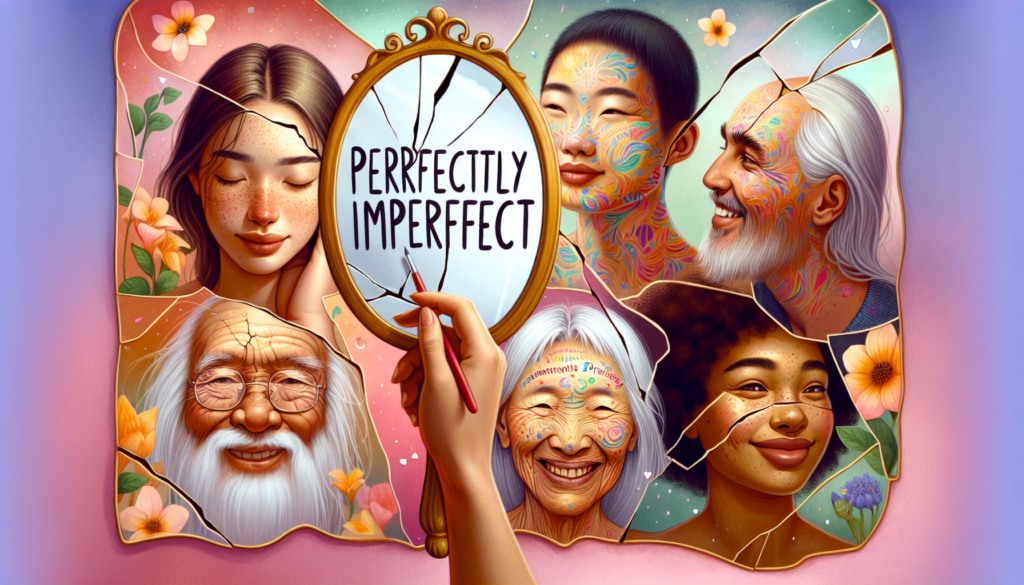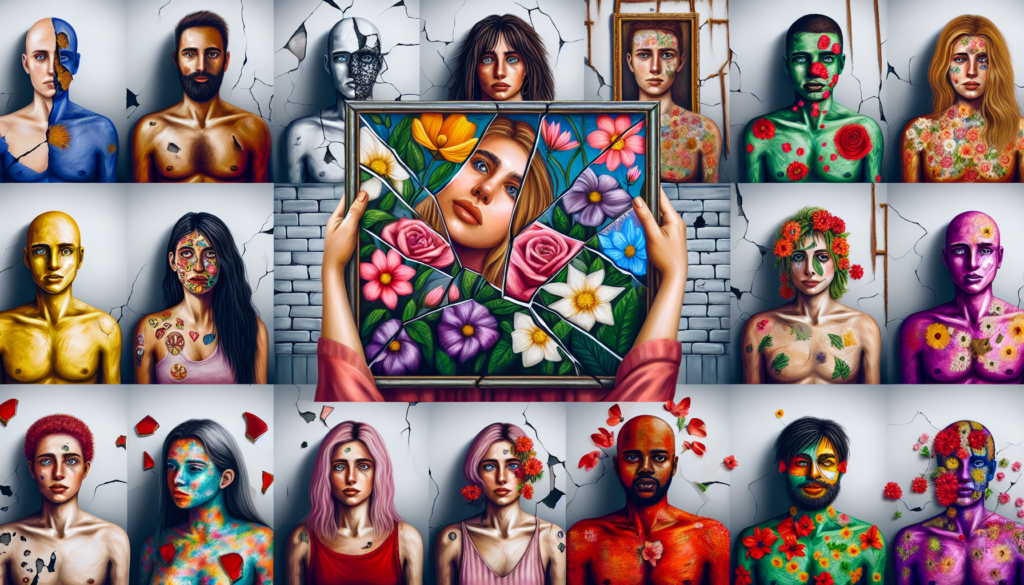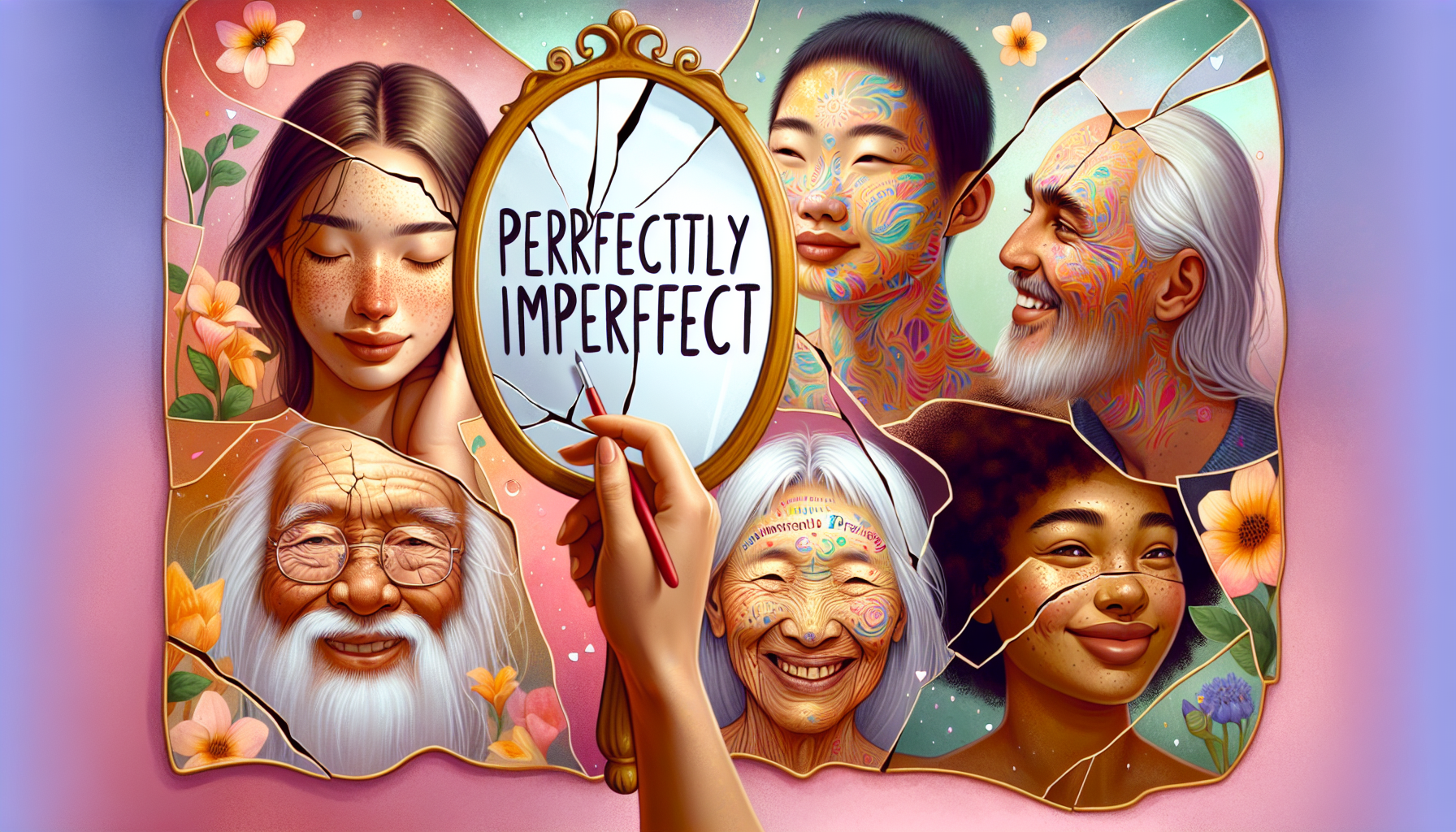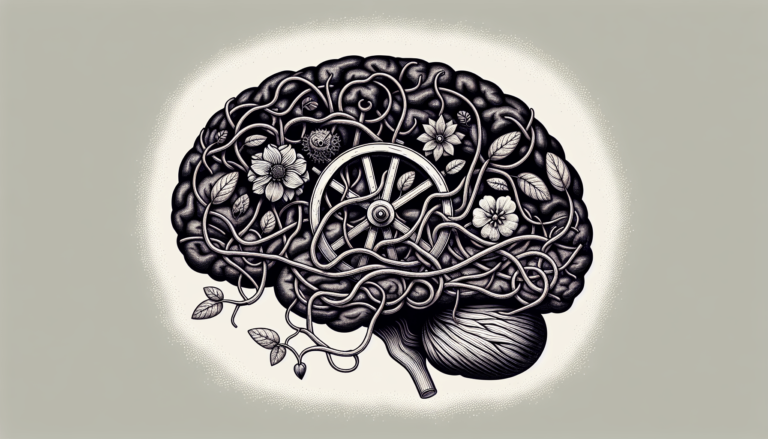The Beauty Of Imperfection: Embracing Flaws
In life, it is natural to strive for perfection. We constantly seek flawlessness, both in ourselves and in the world around us. However, what if we were to shift our perspective and embrace the beauty of imperfection? This article explores the idea of accepting flaws, highlighting the unique charm and character they can bring. It encourages you to embrace imperfections as a part of your identity and find joy in the imperfect moments that make life truly remarkable.

1. Understanding Imperfection
1.1 Definition of Imperfection
Imperfection can be defined as the state or quality of being flawed, incomplete, or lacking in some way. It is the opposite of perfection, which is often associated with flawlessness and excellence. Imperfection acknowledges that nothing in this world is without blemish or shortcomings. It recognizes the inherent vulnerabilities and limitations that exist within every aspect of life.
1.2 Historical Perspectives on Imperfection
Throughout history, different cultures and philosophies have embraced the concept of imperfection. In ancient Japan, the concept of Wabi-Sabi emerged, celebrating the beauty of impermanence and imperfection. This aesthetic philosophy appreciates the rustic, weathered, and imperfect nature of objects, finding beauty in their unique characteristics. Similarly, ancient Greek philosophy recognized that perfection is unattainable for humans and instead advocated for embracing the imperfections that make us human.
1.3 The Psychological Impact of Seeking Perfection
The relentless pursuit of perfection can have a detrimental impact on mental health and well-being. When you strive for an unattainable ideal, it can lead to chronic self-criticism, anxiety, and feelings of inadequacy. The pressure to be flawless can also harm relationships, as it promotes unrealistic expectations and a fear of vulnerability. Understanding the psychological impact of seeking perfection is crucial in learning to embrace imperfection and finding contentment with oneself.
2. The Paradoxical Appeal of Imperfection
2.1 Cultural Appreciation of Wabi-Sabi
Wabi-Sabi, originating from Zen Buddhism, has gained significant cultural appreciation worldwide. It recognizes the transient nature of existence and emphasizes the beauty found in imperfections, simplicity, and asymmetry. The wabi-sabi aesthetic can be seen in Japanese tea ceremonies, traditional pottery, and the art of Kintsugi, where broken ceramics are repaired with gold, enhancing their beauty and showing reverence for their imperfections.
2.2 Embracing the Uniqueness of Handmade Items
Handmade items possess a distinct charm precisely because they are not mass-produced or flawless. From hand-knitted sweaters to hand-painted artworks, imperfections become markers of authenticity, showcasing the human touch and the creative journey behind the finished piece. When you embrace these imperfections, you appreciate the time, effort, and uniqueness that went into creating something truly one-of-a-kind.
2.3 The Allure of Natural Beauty
Nature, with all its imperfections, has an undeniable allure. From the intricate patterns on a flower petal to the gnarled branches of a tree, imperfections can be seen as treasures that tell stories of growth and resilience. The allure of natural beauty lies in its authenticity, reminding us that imperfections are an inherent part of the world and add to its richness and diversity.
3. Challenging Societal Standards
3.1 Deconstructing the Notion of Perfection
To embrace imperfection, it is essential to challenge and deconstruct societal standards of perfection. Recognize that these standards are often constructed and perpetuated by industries that profit from creating insecurities and promoting unattainable ideals. By questioning these norms, you can liberate yourself from the pressure to conform and redefine your own definition of beauty, success, and fulfillment.
3.2 Redefining Beauty Standards
Beauty standards have evolved throughout history and vary across different cultures. Embracing imperfections means broadening the definition of beauty to include diversity in all its forms. Celebrate body positivity, challenge beauty stereotypes, and appreciate the unique features that make each individual beautiful in their own way. By redefining beauty standards, you contribute to a more inclusive and accepting society.
3.3 Promoting Authenticity
Authenticity is a powerful antidote to the pursuit of perfection. By fostering an environment where authenticity thrives, you encourage genuine connections, open communication, and self-expression. Encourage vulnerability and honesty in yourself and others, recognizing the strength in embracing imperfections and allowing others to do the same. Authenticity promotes a sense of belonging and creates space for personal growth and collective understanding.
4. Personal Growth through Imperfection
4.1 Building Resilience and Perseverance
Imperfections present opportunities for personal growth. By acknowledging and learning from mistakes, setbacks, and failures, you build resilience and perseverance. Accepting imperfections as part of the journey allows you to bounce back stronger. Embracing imperfection also fosters a growth mindset, transforming failures into valuable lessons and experiences that propel you forward.
4.2 Learning from Mistakes
Mistakes are an integral part of the human experience. Embracing imperfection means reframing mistakes as learning opportunities. By reflecting on your mistakes and applying the lessons learned, you become more self-aware and gain valuable insights for personal development. Mistakes allow you to refine your approach, broaden your knowledge, and ultimately grow as an individual.
4.3 Fostering Self-Acceptance
Self-acceptance is a fundamental aspect of embracing imperfection. Recognize that you are worthy and deserving of love and acceptance, regardless of your flaws and shortcomings. Embrace your whole self, acknowledging both your strengths and weaknesses. When you cultivate self-acceptance, you free yourself from the need for external validation and find inner peace and contentment.

5. Embracing Imperfection in Relationships
5.1 Developing Empathy and Compassion
Embracing imperfection in relationships involves developing empathy and compassion for both yourself and others. Recognize that everyone has their own flaws and vulnerabilities. By embracing imperfections, you can better understand and relate to the struggles of others, fostering deeper connections, and cultivating a more compassionate and understanding approach in your relationships.
5.2 Accepting Vulnerability and Flaws in Others
Just as you have imperfections, so do those around you. By accepting the vulnerabilities and flaws of others, you create a safe and non-judgmental space for them to express their authentic selves. Embracing imperfections in others allows for a more genuine and enriching connection, fostering trust and intimacy in relationships.
5.3 Cultivating Healthy Boundaries
Embracing imperfections requires setting and maintaining healthy boundaries in relationships. Recognize that imperfections do not justify harmful or abusive behavior. Establishing clear boundaries promotes mutual respect and ensures that both parties feel safe and valued. By valuing and respecting your own imperfections, you set the standard for how others should treat you, promoting healthier and more fulfilling relationships.
6. Finding Beauty in Imperfections
6.1 Celebrating Uniqueness and Diversity
Embracing imperfections means celebrating the uniqueness and diversity that exist within ourselves and others. Recognize that it is our differences that make us interesting and beautiful. By appreciating the wide array of qualities, backgrounds, and experiences that people possess, you foster a sense of inclusivity and create a richer, more vibrant world.
6.2 Appreciating the Patina of Age
Imperfections can manifest as wear and tear over time, creating a patina of age that adds character and depth to objects and individuals. Whether it’s the wrinkles on your face, the cracks in an antique vase, or the faded pages of a cherished book, imperfections add layers of history, stories, and memories. Appreciating the patina of age invites us to cherish the passage of time and find beauty in the signs of a life well-lived.
6.3 Seeing Imperfections as Opportunities for Growth
Imperfections can serve as catalysts for personal and collective growth. Rather than viewing imperfections as failures, approach them as opportunities for growth and self-improvement. Embrace imperfections with curiosity and an open mind, recognizing that they hold the potential for transformative change and new possibilities. In embracing imperfections, you cultivate resilience, creativity, and adaptability.
7. Overcoming the Fear of Judgment
7.1 Breaking Free from the Comparison Trap
The fear of judgment often stems from comparing ourselves to others. Recognize that comparison is an unfair and unhelpful measure of self-worth. Focus on your own journey and progress, celebrating your unique qualities and achievements. By breaking free from the comparison trap, you embrace your imperfections and find contentment in your own path.
7.2 Embracing Imperfections in a Judgmental Society
In a society that often values perfection, embracing imperfections can be challenging. However, recognizing that societal standards are constructed and based on unrealistic ideals can liberate you from their influence. Surround yourself with supportive individuals who appreciate and celebrate imperfections. By challenging societal norms, you contribute to a more inclusive and accepting society that values authenticity and diversity.
7.3 Shifting Focus to Inner Beauty
Embracing imperfections requires shifting your focus from external appearances to inner beauty. Recognize that true beauty extends beyond physical attributes and lies in kindness, empathy, and integrity. By cultivating inner qualities and nurturing your character, you create a strong foundation for self-acceptance and authentic self-expression. When you prioritize inner beauty, the desire for external validation diminishes, allowing you to embrace imperfections with grace and confidence.
8. Embracing Flaws in Art and Media
8.1 Challenging Conventional Beauty Standards in Art
Art has the power to challenge conventional beauty standards and celebrate imperfections. Artists often use their craft to explore the complexities of the human experience and convey emotions that cannot be encapsulated by perfection. By appreciating art that embraces flaws and challenges beauty norms, you encourage a more inclusive and diverse representation of beauty within society.
8.2 Authentic Representation in Media and Advertising
Media and advertising play a significant role in shaping societal beauty ideals. By advocating for authentic representation, we can challenge the narrow definitions of beauty that are often perpetuated. Support media that embraces diversity in all forms and amplifies authentic voices and stories. By demanding inclusivity, we pave the way for a more accepting and empowering media landscape.
8.3 Advocating for Diversity and Inclusivity
Embracing imperfections means advocating for diversity and inclusivity in all aspects of society. Encourage the participation and representation of marginalized voices and identities. Embrace diversity in race, gender, age, body type, and ability, recognizing that inclusivity strengthens communities and fosters a sense of belonging. By standing up for diversity, you contribute to a more compassionate and accepting world.
9. Cultivating a Mindset of Acceptance
9.1 Practicing Mindfulness and Self-Reflection
Cultivating a mindset of acceptance begins with practicing mindfulness and self-reflection. By being present in the moment and observing your thoughts and feelings without judgment, you develop a deeper understanding of yourself. Mindfulness allows you to acknowledge your imperfections without getting caught up in self-critical thoughts, fostering self-compassion and acceptance.
9.2 Letting Go of Perfectionist Tendencies
To embrace imperfection, it is crucial to let go of perfectionist tendencies. Recognize that perfectionism is an unattainable goal that can lead to dissatisfaction and self-criticism. Instead, strive for progress, growth, and self-improvement. Embrace the beauty of imperfection by accepting that mistakes and shortcomings are a part of life’s journey.
9.3 Embracing Change and Evolution
Embracing imperfection requires a willingness to embrace change and evolution. Recognize that life is a continuous process of growth and transformation. Embrace the impermanence of life, allowing yourself and others room to evolve and change. By embracing change, you open yourself up to new experiences, perspectives, and opportunities for self-discovery.
10. Harnessing Imperfection for Creativity
10.1 Taking Risks and Embracing Serendipity
Imperfections can be a catalyst for creativity and innovation. By taking risks and embracing serendipity, you invite the unexpected and discover new avenues for self-expression. Embrace the freedom to explore, make mistakes, and stumble upon unexpected and beautiful outcomes. In harnessing imperfection, you unleash your creative potential.
10.2 Seeing Mistakes as Opportunities
Mistakes are not setbacks but valuable opportunities for growth in the creative process. Embrace the unexpected twists and turns that come with imperfection. View mistakes as stepping stones towards new insights and breakthroughs. By reframing mistakes as opportunities, you cultivate a creative mindset that thrives on experimentation and discovery.
10.3 Embracing Flaws as Unique Expressions of Creativity
Flaws have the power to enhance the uniqueness and expressiveness of creative endeavors. Whether it’s a crack in a ceramic sculpture or an unplanned brushstroke on a canvas, imperfections can add depth and character to artistic work. Embrace these flaws as unique expressions of creativity, celebrating the unexpected beauty that emerges when we embrace imperfections and let our creativity flow.
Embracing imperfection is a journey that encompasses various aspects of life—personal growth, relationships, societal standards, and creativity. By understanding the definition and historical perspectives of imperfection, appreciating its paradoxical appeal, and challenging societal norms, you can cultivate a mindset of acceptance that celebrates the beauty of imperfections. From personal resilience to authentic representation in art and media, embracing imperfections unlocks the potential for growth, connection, and creative expression. So embrace your imperfections, for they are the qualities that make you beautifully human.







